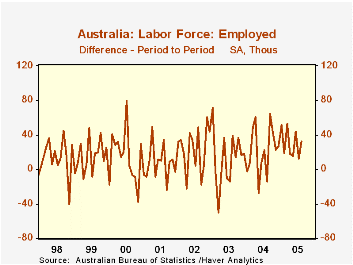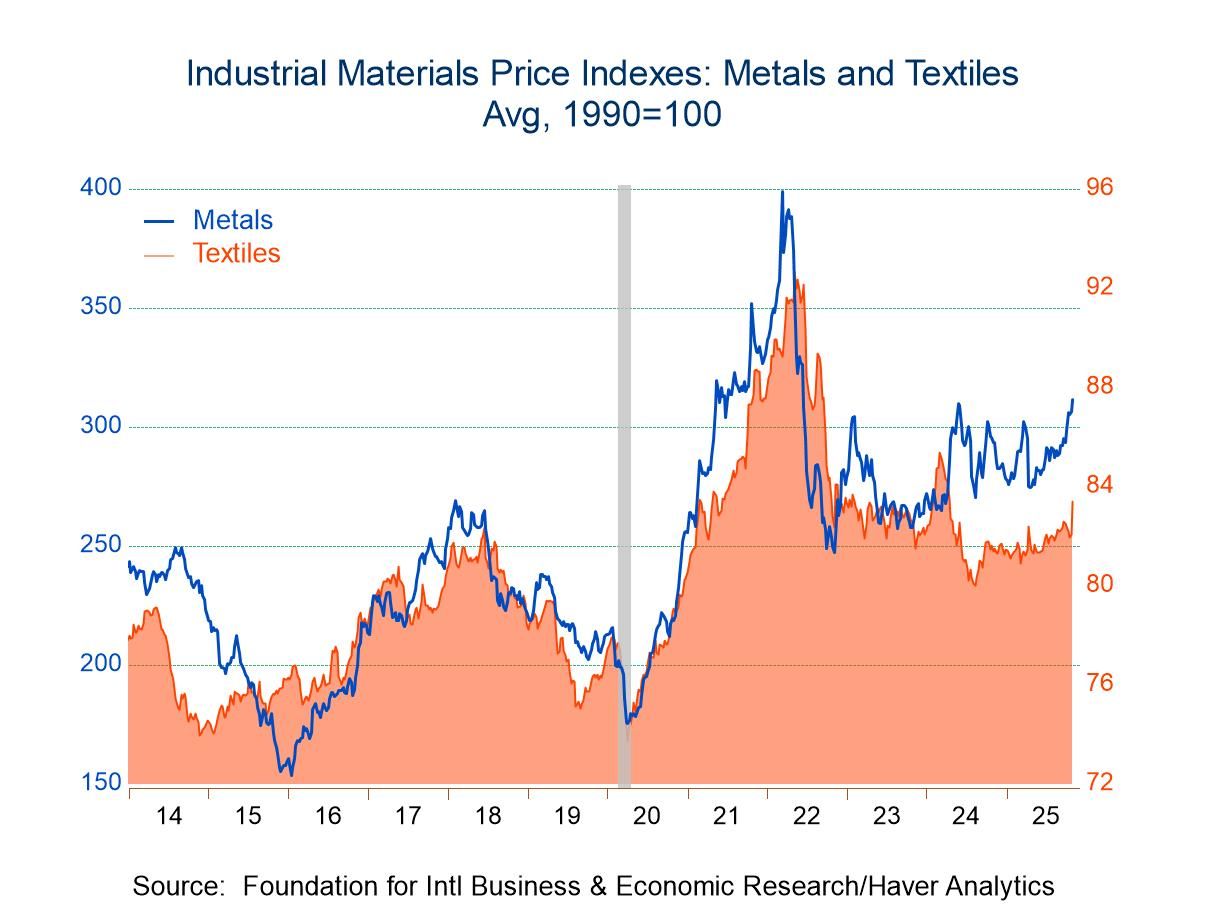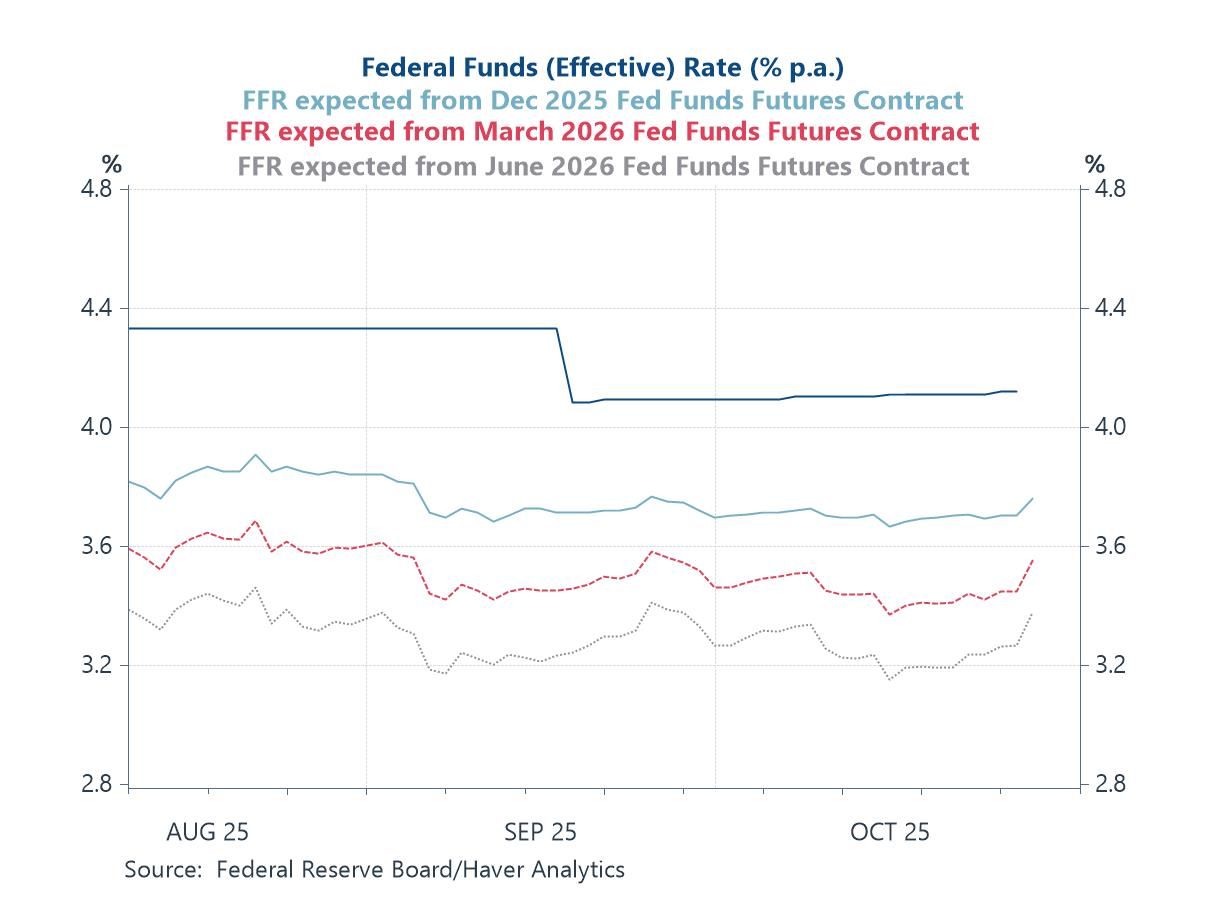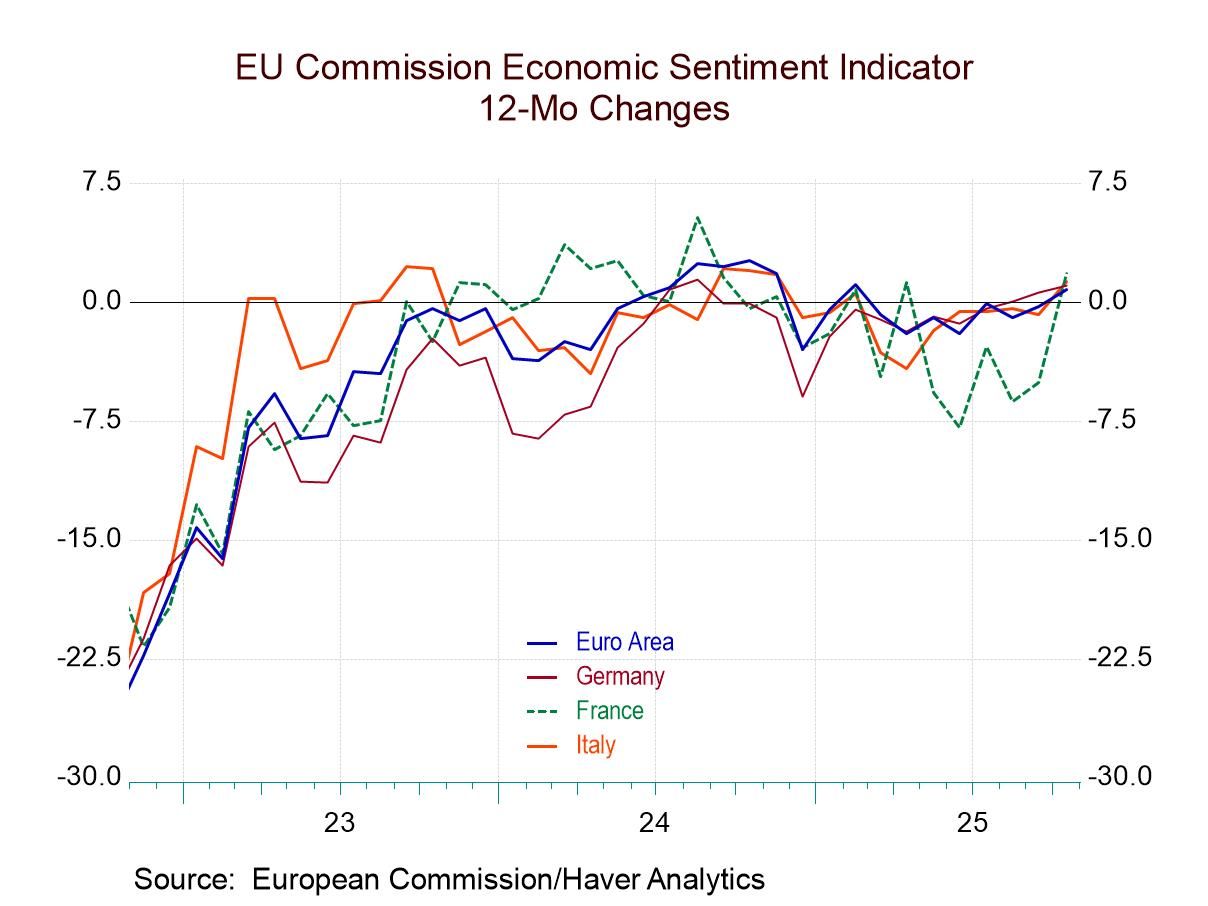 Global| Sep 08 2005
Global| Sep 08 2005Australian Employed Continues to Rise; Unemployment Rate Maintains Record Low
Summary
The Australian economy remains strong, as labor markets show favorable trends and GDP growth in Q2 was the best since late 2003. August's labor force survey included a gain in employment of 32,600, following July's 12,100. One [...]

The Australian economy remains strong, as labor markets show favorable trends and GDP growth in Q2 was the best since late 2003. August's labor force survey included a gain in employment of 32,600, following July's 12,100. One forecast survey had expected the number of people employed to be flat in August. Indeed, a quick glance at the graph showing the monthly changes suggests that this would be a logical supposition: this current string of monthly increases is a long one, 12 months. Employment in Australia is characterized by a quite erratic monthly pattern, rather than the currently persisting increases. In fact, the length of this 12-month stretch has not been surpassed since 1980.
Other aspects of the data describe general strength in the labor market. Two months ago, we first saw the unemployment rate at 5%, a low for at least 28 years, and that has been maintained now for a third successive month. Further, the participation rate has hit another new high, 64.8%. Sometimes, a low unemployment rate only signals that people have withdrawn from the labor force, that they see few opportunities to work, so they reduce their participation. This is clearly not the case presently in Australia, with record participation, now also sustaining its current historic range for a third month; before this year, the proportion of the population working or wanting to work had only been more than 64% in five individual months since the inception of these data in February 1978.
Australian GDP, reported yesterday (September 7) also showed this strength in Q2. At a 1.3% quarterly increase, it was marginally higher than forecasts, which called for 1.2%. Business investment rebounded after a Q1 decline, with both construction and machinery experiencing large increases. Exports accelerated after slowing somewhat in Q1, while import growth eased, so that the net export deficit was a much smaller drag on growth than it had been in Q1. Consumer spending expanded at about the same 0.8% pace as in Q1. The nation's economy continues to benefit from the growth in China and from the worldwide increases in commodity prices; the mining sector in particular is seeing vigorous growth, along with petroleum refining and processing of nonmetallic minerals. Finance and parts of the transportation sector are joining in the gains.
| Seasonally Adjusted | Aug 2005 | July 2005 | Aug 2004 | 2004 | 2003 | 2002 |
|---|---|---|---|---|---|---|
| Employed (thous) | 10067.5 | 10034.9 | 9664.3 | 9682.2 | 9481.4 | 9270.5 |
| Change (thous/%) | +32.6 | +12.1 | 4.2 | 2.1 | 2.3 | 2.0 |
| Unemployed (thous) | 529.9 | 524.8 | 527.0 | 566.9 | 610.9 | 636.1 |
| Unemployment Rate (%) | 5.0 | 5.0 | 5.7 | 5.5 | 6.1 | 6.4 |
| Participation Rate (%) | 64.8 | 64.6 | 63.4 | 63.6 | 63.6 | 63.4 |
Carol Stone, CBE
AuthorMore in Author Profile »Carol Stone, CBE came to Haver Analytics in 2003 following more than 35 years as a financial market economist at major Wall Street financial institutions, most especially Merrill Lynch and Nomura Securities. She had broad experience in analysis and forecasting of flow-of-funds accounts, the federal budget and Federal Reserve operations. At Nomura Securities, among other duties, she developed various indicator forecasting tools and edited a daily global publication produced in London and New York for readers in Tokyo. At Haver Analytics, Carol was a member of the Research Department, aiding database managers with research and documentation efforts, as well as posting commentary on select economic reports. In addition, she conducted Ways-of-the-World, a blog on economic issues for an Episcopal-Church-affiliated website, The Geranium Farm. During her career, Carol served as an officer of the Money Marketeers and the Downtown Economists Club. She had a PhD from NYU's Stern School of Business. She lived in Brooklyn, New York, and had a weekend home on Long Island.





